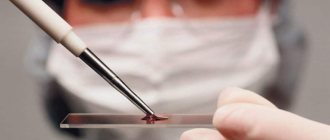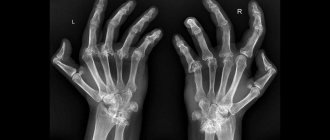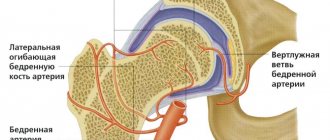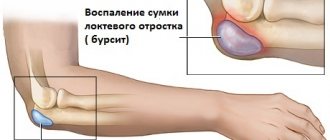You are in the section: Home » Articles » STDs: chlamydia and Chlamydia (Chlamydia trachomatis) Bacteria Chlamydia trachomatis A common cause of one of the sexually transmitted diseases (STDs) is chlamydia. You may not be aware that you have this condition because for many people it is silent and does not show genital soreness or urethral/vaginal discharge.
Chlamydia affects both men and women and occurs in all age groups, although it is most common among young women. This disease is not difficult to treat if you know you have it. And if it is not treated at all, more serious complications and health problems may appear.
Complications.
Chlamydia may be associated with:
• Other sexually transmitted infections (STIs). People with chlamydia infection have a higher risk of developing sexually transmitted diseases, including gonorrhea and HIV.
• Inflammation of the pelvic organs, due to infection of the uterus and fallopian tubes, accompanied by pain in the pelvic area and increased body temperature. Severe infection will require hospitalization for intravenous antibiotics. As a result of inflammation, damage to the fallopian tubes, ovaries and uterus, including the cervix, is highly likely.
• Infectious lesions of the testicles (epididymitis). Chlamydial infection can cause inflammation of the seminiferous tubules and epididymis. The infection can lead to fever, scrotal pain, and swelling.
• Prostate infection. The bacterium Chlamydia trachomatis can invade a man's prostate tissue, causing chlamydial prostatitis, which causes pain during or after sex, fever or chills, painful urination and lower back pain.
• Infections in newborns. During childbirth, chlamydia infection can be passed from mother to baby, causing pneumonia or severe eye infection.
• Infertility. Chlamydia infections—even those that don't cause any signs or symptoms—can cause scarring and blockage of the fallopian tubes, which is likely to lead to infertility.
• Reactive arthritis. People affected by Chlamydia trachomatis have a higher risk of developing reactive arthritis, also known as Reiter's syndrome. This condition usually affects the joints, eyes and urethra.
Chlamydia and Reiter's syndrome
The majority of patients are men with positive HLA-B27.
This antigen is an immunogenetic marker.
Indicates a person’s increased predisposition to spondyloarthropathy, including this disease.
Why one person is predisposed to the disease and another is not has not yet been precisely established.
The classic manifestation of the syndrome is the development of a clinical triad of diseases, which includes:
- non-infectious arthritis
- urethritis
- conjunctivitis
Inflammation can affect a variety of joints.
It affects both small (toes, hands) and large joints (knee joints, intervertebral joints).
All this is accompanied by the formation of swelling in the joint area, pain, and stiffness in the morning.
The inflammatory reaction can also spread to the tendons.
Conjunctivitis is another symptom of Reiter's disease.
Inflammation of the mucous membrane of the eyes is accompanied by redness, a feeling of sand, increased tearing, and the release of purulent exudate.
The main provoking factor in the development of the disease is Chlamydia trachomatis.
Therefore, pathological changes in the urogenital tract are observed.
In men there are symptoms of inflammation of the prostate gland, in women - of the cervix and ovaries.
There is also pain when urinating, nagging pain in the lower abdomen, and discomfort during sexual intercourse.
There may be periodic purulent discharge from the urethra, reminiscent of signs of gonorrhea.
The diagnosis is made based on the patient’s symptoms listed above and the presence of an infectious process.
Or recent therapy for chlamydia.
When diagnosing, it is advisable to exclude the presence of Chlamydia trachomatis in the body.
For this purpose, ELISA and PCR analysis are prescribed.
Treatment is mainly symptomatic.
It is recommended to follow and avoid physical exercise.
Conjunctivitis can be successfully treated with bacteriostatic drugs.
To relieve joint pain, anti-inflammatory ointments or gels may be recommended.
Prevention.
The best way to prevent Chlamydia trachomatis infection is to abstain from sexual activity. If this is not possible, then:
- Use condoms. Use a male latex condom or a female polyurethane condom every time you have sexual intercourse. But even correct use of a condom during each coitus reduces, but does not eliminate, the risk of infection.
- Limit the number of sexual partners you have. Having multiple sexual partners increases the risk of contracting chlamydia and other sexually transmitted infections.
- Check your health regularly. If you are sexually active, especially if you have multiple partners, talk to your doctor about how often you should get a comprehensive screening for chlamydia and other sexually transmitted infections, or a “ checkup .”
- Avoid frequent vaginal douching. Douching is not recommended because it reduces the number of beneficial bacteria present in the vagina (such as Bacillus Dederlein), which can increase the risk of infection with pathogenic bacteria and cause vaginal dysbiosis and bacterial vaginosis.
Chlamydial arthritis: answers to frequently asked questions
When does arthritis develop after infection with chlamydia?
Inflammation of the joints can be observed several days or 2-3 weeks after infection with a sexually transmitted pathology.
Can there be asymptomatic chlamydia with arthritis?
This phenomenon can occur, but is extremely rare.
Are there fevers and general symptoms of arthritis associated with chlamydia?
Yes, body temperature may rise slightly due to an inflammatory reaction. Patients also note swelling in the joints and redness of the skin.
Does Chlamydia Treatment Help Relieve Arthritis Symptoms?
Treatment of chlamydia eliminates further development of the disease. A separate group of drugs will help eliminate the symptoms of joint inflammation.
Diagnostics.
Due to the high likelihood of complications, screening for chlamydia and other STIs is recommended:
• Sexually active women aged 25 years or younger . The incidence of chlamydial infection is highest in this group, so an annual screening test is recommended. Even if you have been tested recently, get tested again if you have a new sexual partner.
• Pregnant women . Should be tested for chlamydia during the first prenatal examination. In case of a high risk of infection (when changing sexual partners or when a regular partner is infected), testing must be repeated.
• Women and men at high risk of infection . Frequent screening for chlamydia is recommended if you have multiple sexual partners or unprotected sex (oral, vaginal or anal). And also in case of infection with another STI or the presence of one in a sexual partner.
Screening and diagnosing chlamydia is relatively simple. Tests include:
• Analysis of urine. A laboratory urine test can reveal the presence of this infection.
• Smear. The doctor takes a smear of cervical discharge for culture or for chlamydia antigens. This can be done during a regular Pap test (with a PAP test, the doctor removes a sample of cells from the cervix using a small, cone-shaped brush and a tiny spatula. The doctor then rinses the brush and spatula in a vial filled with a special liquid and sends the vial to a laboratory for analysis).
For men, the doctor inserts a thin tip into the urethral canal of the penis to obtain a sample from the urethra. In some cases, a smear is also taken from the anus.
After recovery from the initial chlamydial infection, it is necessary to undergo a follow-up examination after three months.
Causes
The leading etiological agent of chlamydial arthritis is chlamydia. These causative agents of urogenital chlamydia - Chlamydia trachomatis - are small bacteria that parasitize human cells. After entering the body, they remain in it for a long time without manifesting themselves. But with a sharp decrease in immunity, pathogenic microorganisms begin to actively multiply, releasing toxic products of their vital activity into the surrounding space. Chlamydia is most often transmitted sexually, and the arthritis of the same name is diagnosed in 80% of men and 15-20% of women. Pathology is detected extremely rarely in children.
The role of infectious agents in the etiopathogenesis of reactive aseptic arthritis lies in the molecular similarity of their antigens to human autoantigens. Having penetrated the joints, microorganisms begin to multiply rapidly, but this is not the cause of the development of the inflammatory process. After their detection, the immune system produces specific proteins - antibodies, necessary to destroy pathogenic bacteria. But the similarity of the protein structures of microorganisms with the tissues of cartilage, synovial membranes, ligaments, and tendons leads to an attack by antibodies on the body’s own cells. This becomes the impetus for the development of chlamydial arthritis, which has an autoimmune etiology. Thus, the inflammatory process in the joints is caused not by the infectious agents themselves, but by the reaction of the immune system to their invasion.
Not every infected person develops chlamydial arthritis. The penetration and persistence of microbes is facilitated by the anatomical and histological uniqueness of articular tissues. Migration of antigen-presenting cells from the systemic circulation is facilitated by:
- fenestrated (with thin endothelium and pores in endothelial cells) synovial capillaries;
- presence of cell adhesion molecules.
Antigens are fixed by chondrocytes and synoviocytes, which leads to various immunological reactions - cell growth factors, cytokines, inflammatory mediators are produced, and the concentration of toxic oxygen radicals and nitric oxide increases. Chlamydial arthritis is diagnosed in patients who are hereditarily predisposed to it and have a special structure of joint tissue.
Treatment.
Chlamydia trachomatis infection is treated with certain types of antibiotics. You may receive a single dose, or you may need to take the medication daily or several times a day for five to ten days.
In most cases, the infection clears up within one to two weeks. During this time, you must abstain from sex. In addition, simultaneous treatment of the sexual partner or partners is mandatory, even if they do not show signs of infection or severe symptoms. Otherwise, the infection may return from an untreated sexual partner.
Having had chlamydia does not develop immunity against re-infection in the future.
Preparing for a visit to the clinic.
If you think that you have a hidden sexually transmitted infection, make an appointment with a venereologist at our clinic for a comprehensive examination and consultation on treatment.
What should be done:
Before your visit, be prepared to answer the following questions:
• When did you first start having symptoms?
• What can strengthen or weaken them?
• What medications or supplements do you take regularly?
You can also make a list of questions to ask your doctor. For example:
• Should I be tested for other sexually transmitted infections?
• Should my partner be tested or treated for chlamydia infection?
• Should I abstain from sexual activity during treatment and for how long?
• How can I prevent chlamydia infection in the future?
What to expect from a doctor?
Your doctor will likely ask you a number of questions, such as:
• Do you have a new sexual partner or several partners?
• Do you always use condoms?
• Do you have pain in the pelvic area?
• Do you experience painful urination?
• Do you have any unusual genital discharge?








